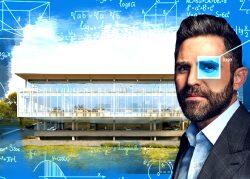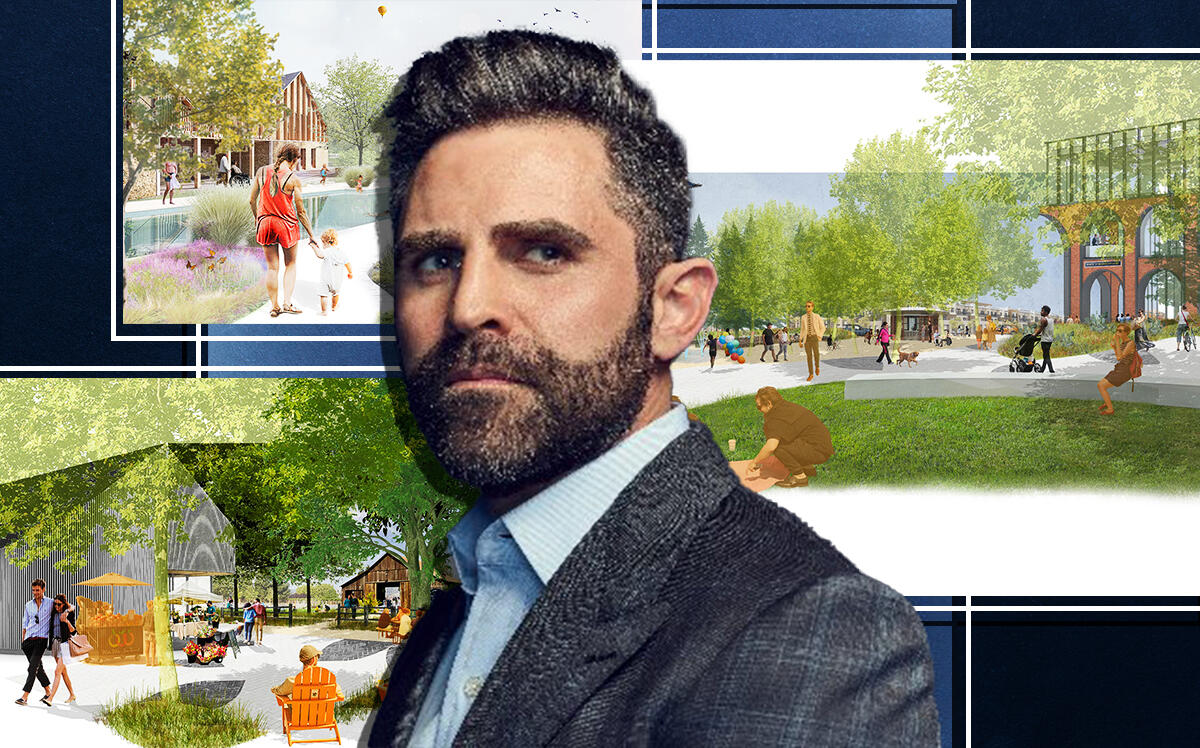Imagine a smart home designed with everything from cereal-eating iPad kids to wi-fi enabled water-leak detection in mind. Where you can step out to a nearby trail — the same one you bike your kids to school on — and walk to dinner with friends or have coffee on a quaint town square.
This is the future of suburbia that developer Ari Rastegar envisions.
The CEO of Rastegar Property Company wrote a five-page e-pamphlet explaining the concept, which he’s coined “futuristic suburbanism,” and he’s turning his ideas into reality with a 318-acre built-for-rent development in Kyle, a suburb of San Marcos, the fast-growing city between Austin and San Antonio. And he’s seeking to scale the concept in suburbs across the sunbelt.
What is futuristic suburbanism, and how do you plan to expand it beyond the development in Kyle?
It’s a belief that people, families, and communities alike will exist in pocket communities, or pocket neighborhoods and pocket economies surrounding major metropolitan cities. Look at Austin as an example.
Austin doesn’t have the native infrastructure to be a major metropolitan city. Dallas or Houston were built to be metropolises. They have 16-lane highways, and all of the thought processes that the original city planners had was to build a massive sprawl.
Cities like Austin, Texas, or Nashville, Tennessee, that have become these major growth phenomenons, don’t have that native infrastructure. So because of that, the growth is stretching to the suburban areas 10, 15, 20 or 30 miles out of the heart of the city, where people are commuting into the major cities. Those outer rims have begun to have their own kind of identities outside of the city.
A great example of this would be Scottsdale, Arizona, with respect to Phoenix, Arizona. Scottsdale, although part of the Phoenix MSA, is really its own ecosystem.
So it’s about creating independent ecosystems in suburban areas?
That are anchored by the major city but develop their own ethos and their own identities similar to the city that they were birthed out of.
Why is Kyle the right location for this?
Right outside of Austin, north of San Antonio, in between two major cities. A typical kind of married family with two kids … one could work in San Antonio, and one can work in Austin, potentially.
That’s the geographical component, the physical component of where this concept exists. The next piece is that we’re in a post-COVID world now, where we’ve seen what it could be like to actually be stuck in our home, being quarantined.
Is there a way to have all of the necessities within very close proximity, so that in the event of another quarantine, another outbreak, or any of these things … to be able to work, play and live all within a close area?
What does that look like?
So within this 318-acre parcel, which is a pretty big piece of land, but it’s also a pretty small piece of land at the same time, right? Putting the elementary school, putting a little bit of retail, a little coffee shop, a brewery, a barbecue place, a little grocery store and 60 acres of green space. You can see that it’s basically a microcosm of a city in one area.
Explain the “futuristic” aspect.
There’s the physicality of what we’re talking about, and then the kind of ease of use from a psychological standpoint, and then the next piece is marrying humanity and technology.
That means everything “smart.” Electric chargers in the garages for cars, AC controllers, hardware sensors for leak detection, the usage of wattage and electricity.
All of those technological components are being utilized so everything talks to each other. You walk into your house, the temperature is already adjusting for you. It knows that it’s you. Doors lock, doorbells have cameras on them. Everything is integrated within your life technologically that’s completely seamless, even to the architecture of the houses. For example, families and people aggregate in the kitchen more than they do in any other room in the house.
We eat together, we dine together, it’s sort of a humanistic, tribal thing that we do. But because of that, we need to now start having larger islands, ways that people can aggregate in the kitchen, having more charging stations, and all of the things that enable the lifestyle that we’re living, instead of trying to fit in old antiquated architecture design into a new way of living.
How can you build a project five years out and still have the latest technology?
All the smart technology that we’re utilizing right now is in a conceptual form, but information technology grows exponentially. So the actual technology that will be installed in the homes will be the latest version of whatever those technologies are. We understand conceptually the technology that’s going to be there, but we’re leaving wiggle room within the budget to be prepared for the best-in-class technologies that will be needed at the time.
What is the scalability of this?
What are the cities in the United States that are experiencing what we’re talking about? They’re the fastest-growing Sunbelt cities as well. So you have Phoenix, you have Nashville, Raleigh, Charlotte, Tampa, Orlando, Atlanta, Dallas and Houston.
Just so happens that all of those cities that all the companies are migrating to have this exact same ethos, so all of those cities are ripe for the futuristic suburbanism expansion.
How much room is there for developments like this?
At the very least, there are probably 100,000 acres across the United States that are ripe for this type of reinvention or reimagining of how these communities are going to actually live, grow and prosper. Great architecture in great real estate development is responsive to typography, meaning you’re not fundamentally changing, so if you build a beautiful building on the side of the cliff, that side of the mountain in Aspen, you’re not bulldozing the whole mountain. You’re building something into what the land is.
This is no different. We’re responding to what people are needing, wanting, and how they’re growing, not the opposite.
Do you have pending projects in other markets?
We have several major institutions we’re working with now to create a pipeline of projects like this to expand it. We were speaking to major institutional clients, both domestically and globally to build this out across the United States.
This interview has been edited and condensed for clarity.
Read more


